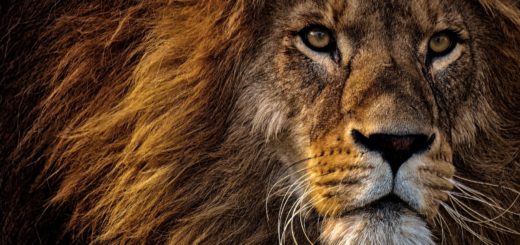Serpent Spirit: Exploring the Mystique of Snake Signs

Before diving in, please note: This post is for informational purposes only. If you’d like to know more about how we approach topics, feel free to check out our friendly Disclaimer Page.
Hey there, amazing readers! 🖐️ Just a quick note: yes, we know there are a lot of ads here. Trust us, we get it—it’s not the prettiest look, but they help us keep this blog alive and kicking. Those pesky little ads cover the costs of all the behind-the-scenes magic, from hosting and tech stuff to creating content we hope you’ll love.
We’re committed to delivering quality posts, and your support (even just sticking around despite the ads) means everything to us. So, bear with us, and thanks for helping us keep the good vibes rolling. Now, on to the fun stuff! 😉
TRANSLATE BUTTON AT THE END OF THE ARTICLE
Serpent Spirit: Exploring the Mystique of Snake Signs
Overview
Throughout history, snakes have captivated the human imagination with their mystique and symbolism.
Across different cultures and religions, these slithering creatures have been revered, feared, and celebrated.
From ancient mythologies to modern-day symbolism, the serpent spirit holds a special place in our collective consciousness.
In this article, we will delve into the various aspects of snake signs, exploring their symbolic significance, their role in mythology, religion, and art, as well as their connection to dreams, folklore, healing, and feminine energy.
Join us on a fascinating journey into the intriguing world of serpents.
The Symbolic Significance of Snakes in Different Cultures
In many cultures, snakes symbolize transformation and regeneration due to their ability to shed their skin.
This symbolism is particularly prominent in the ancient civilizations of Egypt and Greece.
In Egyptian mythology, the snake deity known as Wadjet represented protection and was associated with the pharaoh’s power.
Similarly, in Greek mythology, the Ouroboros, a snake biting its own tail, represented the eternal cycle of life, death, and rebirth.
Native American cultures often view snakes as symbols of healing and wisdom.
The Hopi tribe, for example, believes that snakes are emissaries of the underworld and bring messages from the spirits.
In their rituals, snakes are handled with great respect and seen as sacred beings.
In Chinese culture, the snake is one of the twelve zodiac animals and is believed to be a symbol of intelligence, grace, and intuition.
The snake’s ability to navigate underground and its keen senses are seen as qualities to be admired and emulated.
Snakes as Powerful and Ambiguous Symbols in Mythology
In Hindu mythology, the serpent god Naga is both revered and feared.
Naga is believed to have control over the water element and is associated with fertility, protection, and wealth.
However, nagas are also portrayed as dangerous and capable of inflicting harm, highlighting the ambiguous nature of snakes in mythology.
Norse mythology features the serpent Jormungandr, a giant sea serpent encircling the world.
Jormungandr represents chaos and destruction, and it is prophesied that during Ragnarok, the Norse end of the world, it will rise from the depths of the ocean to battle the gods.
The Mayans revered the feathered serpent god, Quetzalcoatl, as a deity of knowledge, wisdom, and creation.
The snake’s ability to shed its skin symbolized renewal and rebirth, further emphasizing the positive aspects associated with snakes in Mayan mythology.
The Relationship Between Snakes and Ancient Wisdom
Ancient Greek philosopher Heraclitus associated snakes with wisdom, stating that they were the most divine creatures due to their ability to rejuvenate themselves.
This belief is echoed in the symbolism of the Caduceus, a staff with two snakes coiling around it, which is associated with the Greek god Hermes and represents healing and transformation.
In ancient Chinese philosophy, snakes are often seen as symbols of wisdom and enlightenment.
The story of the snake shedding its skin is used as a metaphor for personal growth and the shedding of old beliefs and habits to attain higher levels of consciousness.
In Hinduism, the Kundalini serpent represents the dormant spiritual energy coiled at the base of the spine.
Through meditation and spiritual practices, the Kundalini can be awakened, leading to enlightenment and self-realization.
The Intriguing Role of Snakes in Religious Practices
Snakes hold a significant place in many religious rituals.
In some African and Afro-Caribbean religions, such as Voodoo and Santeria, snakes are worshipped as deities or are believed to be possessed by spirits.
They are seen as mediators between the spiritual and physical worlds, and their presence in ceremonies is thought to bring blessings and protection.
In ancient Greece, the cult of Dionysus, the god of wine and ecstasy, featured the use of live snakes in their rituals.
Discover How the Stars Shape Your Life Path with This Complete Guide – Start Here!

Followers would handle venomous snakes without fear of being bitten, as they believed the serpents were under the influence and protection of Dionysus.
Snake handling is a practice found in some branches of Christianity, particularly in certain sects of Appalachia in the United States.
Believers handle venomous snakes as a demonstration of faith, trusting in God’s protection.
This practice is controversial and not widely accepted within Christianity.
Snake Imagery in Art: A Fascinating Journey Through History
Snake symbolism has been prevalent in art throughout history.
Ancient Egyptian art often depicted cobras and serpents as symbols of protection and royalty.
The iconic gold funerary mask of Tutankhamun features a cobra on the forehead, symbolizing the pharaoh’s divinity and protection in the afterlife.
In Greek and Roman art, snakes were associated with healing.
The Asclepius staff, a symbol of medicine, features a snake coiled around a rod, representing the healing powers associated with snakes.
Snakes have also been featured prominently in European art.
In Renaissance paintings, the biblical story of Adam and Eve often depicts a serpent tempting Eve with the forbidden fruit, symbolizing temptation and the fall of humankind.
Unveiling the Secrets of Snake Dreams and Their Meanings
Dreaming of snakes can have various interpretations depending on the context.
In general, snakes in dreams often symbolize transformation, hidden fears or desires, or the need for healing.
A snake shedding its skin in a dream may indicate personal growth and the shedding of old habits.
If a snake appears threatening or aggressive in a dream, it may represent feelings of fear, vulnerability, or deceit in waking life.
Conversely, a friendly or docile snake can symbolize wisdom, intuition, or positive transformation.
It is essential to consider personal associations and cultural beliefs when interpreting snake dreams.
Consulting with a dream analyst or exploring dream symbolism in different cultures can provide further insights.
Snakes in Folklore: Tales of Transformation and Temptation
In Western folklore, snakes often represent temptation and deceit.
The biblical story of the serpent tempting Eve in the Garden of Eden is a prominent example.
Snakes in folklore are often seen as cunning and sly creatures that lead humans astray.
In African folklore, snakes are often associated with transformation and shape-shifting.
These stories depict snakes as powerful beings capable of assuming human form and possessing magical abilities.
The Python Princess in Nigerian folklore is an example of a benevolent snake deity.
Native American folklore often portrays snakes as guardians and protectors of sacred places.
The Hopi tribe believes that snakes emerge from underground to watch over and guide humans in times of need.
The Serpent’s Healing Touch: Snakes in Traditional Medicine
Snakes have long been associated with healing in traditional medicine systems.
In Ayurveda, the traditional Indian medicine, snake venom is used in small, controlled doses for therapeutic purposes.
It is believed to possess powerful medicinal properties and is used to treat various ailments, including arthritis and respiratory conditions.
Traditional Chinese medicine also recognizes the therapeutic potential of snakes.
Snake venom is used in some formulations to relieve pain and reduce inflammation.
Additionally, snake gallbladder bile is believed to have medicinal properties for treating certain ailments.
It is important to note that the use of snake products in traditional medicine should be approached with caution and under the guidance of trained practitioners.
Many snake species are endangered, and sustainable alternatives should be considered.
Snakes as Guardians: Their Role in Protecting Sacred Places
In many cultures, snakes are believed to be protectors of sacred sites.
In Hinduism, cobras are associated with Lord Shiva and are often depicted as guardians of temples and shrines.
Devotees believe that the presence of cobras ensures the sanctity and protection of the sacred space.
The presence of snakes in Mesoamerican cultures’ sacred sites, such as the ancient Mayan ruins, was also significant.
These snakes were considered guardians and were believed to communicate with the gods on behalf of the people.
Even in modern-day societies, snakes continue to serve as symbolic guardians.
Snake statues or sculptures are often placed at the entrances of homes or buildings in some cultures to ward off evil or protect against negative energies.
The Connection Between Snakes and the Feminine Energy
Snakes have long been associated with feminine energy and fertility.
In ancient Mesopotamia, the goddess Ishtar was often depicted with snakes, symbolizing her power and connection to the earth’s life force.
In Greek mythology, the Gorgons, snake-haired female creatures, were associated with female mysteries and represented both terror and protection.
Medusa, the most well-known Gorgon, was believed to possess the power to turn people into stone with her gaze.
Discover How the Stars Shape Your Life Path with This Complete Guide – Start Here!

The serpent’s connection with feminine energy can also be seen in Kundalini yoga, where the awakening of the Kundalini serpent is associated with the activation of feminine Shakti energy within individuals.
Serpent Worship: Delving into Ancient Serpent Cults
Serpent worship was prevalent in many ancient civilizations.
In ancient Egypt, the snake deity Wadjet was worshipped as a protective goddess.
The annual Opet festival celebrated her divine presence and connection to the pharaoh’s power.
The Aztecs worshipped the feathered serpent god Quetzalcoatl, considering him the creator of mankind and civilization.
Temples dedicated to Quetzalcoatl were centers of worship and pilgrimage.
The ancient Minoans, inhabitants of Crete, worshipped a snake goddess associated with fertility and regeneration.
Snakes were often depicted in Minoan art, emphasizing their religious significance.
The Enduring Legacy of Snake Signs in Modern Society
Snake symbolism continues to thrive in modern society.
The medical profession uses the Caduceus, a symbol with two snakes coiling around a staff, as a representation of healing and medicine.
The fashion industry often incorporates snake motifs in jewelry and accessories, symbolizing transformation, power, and sensuality.
Snakes are frequently featured in popular culture, movies, and literature, representing both danger and seduction.
From the mythical Medusa to the slithering Nagini in the Harry Potter series, snakes continue to captivate our imaginations.
Conclusion
The mystique of snake signs spans across cultures, mythologies, religions, and art, leaving an indelible mark on human history.
From their symbolic significance in different cultures to their role in mythology, religion, and folklore, snakes have been an enduring source of fascination and interpretation.
Whether as protectors, healers, tempters, or symbols of transformation, snakes embody a complexity that mirrors the intricate nature of human existence.
As we continue to explore and unravel the secrets of snake signs, we gain a deeper understanding of ourselves and our connection to the ancient wisdom that snakes represent.

The Enlightenment Journey is a remarkable collection of writings authored by a distinguished group of experts in the fields of spirituality, new age, and esoteric knowledge.
This anthology features a diverse assembly of well-experienced authors who bring their profound insights and credible perspectives to the forefront.
Each contributor possesses a wealth of knowledge and wisdom, making them authorities in their respective domains.
Together, they offer readers a transformative journey into the realms of spiritual growth, self-discovery, and esoteric enlightenment.
The Enlightenment Journey is a testament to the collective expertise of these luminaries, providing readers with a rich tapestry of ideas and information to illuminate their spiritual path.
Our Diverse Expertise 🌟
While our primary focus is on spirituality and esotericism, we are equally passionate about exploring a wide range of other topics and niches 🌍📚. Our experienced team is dedicated to delivering high-quality, informative content across various subjects ✨.
To ensure we provide the most accurate and valuable insights, we collaborate with trusted experts in their respective domains 🧑🏫👩🏫. This allows us to offer well-rounded perspectives and knowledge to our readers.
Our blog originally focused on spirituality and metaphysics, but we’ve since expanded to cover a wide range of niches. Don’t worry—we continue to publish a lot of articles on spirituality! Frequently visit our blog to explore our diverse content and stay tuned for more insightful reads.





